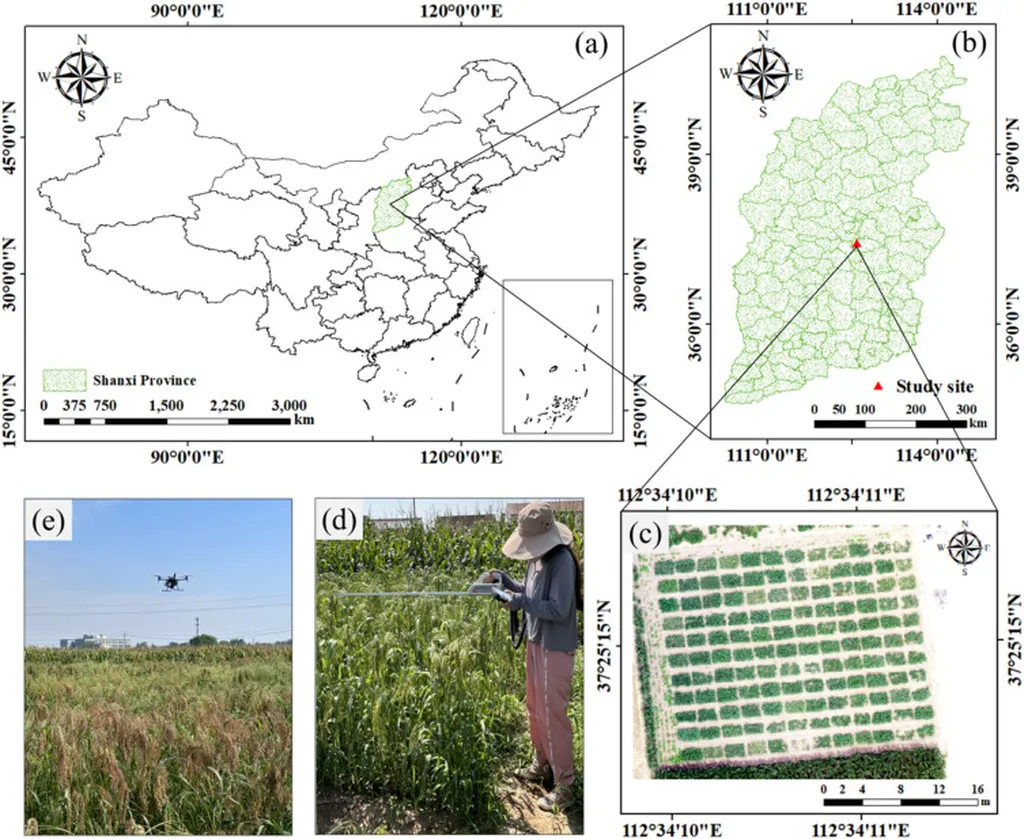In the heart of China’s Shanxi province, researchers have unlocked a new method to assess the quality of broomcorn millet, a staple crop with a history stretching back millennia. The study, led by Rui Li from the College of Agriculture at Shanxi Agricultural University, leverages hyperspectral imaging to predict amylose content (AC) in broomcorn millet, a critical factor in determining its processing quality and genetic traits. Published in the *Journal of Agriculture and Food Research*, the research offers a non-destructive, efficient approach that could revolutionize quality assessment and precision breeding in the agriculture sector.
Broomcorn millet, known for its versatility and nutritional value, is processed into various forms—grain, millet, and flour—each with distinct spectral characteristics. The study evaluated 134 accessions over two years, revealing that white-grained varieties exhibited the highest reflectance in both visible and near-infrared regions, while black-grained varieties absorbed more in the near-infrared spectrum. “Understanding these spectral differences is crucial for tailoring breeding programs to enhance specific traits,” Li explained. This insight could guide breeders in selecting varieties with optimal processing qualities, ultimately improving marketability and consumer satisfaction.
The research also uncovered a significant positive correlation between thousand-grain weight and amylose content, suggesting that heavier grains tend to have higher AC. Conversely, the length-to-width ratio was negatively correlated with yield, indicating that rounder grains are more conducive to high-yield breeding. “This finding challenges conventional breeding practices and opens new avenues for optimizing grain shape and size for better yields,” Li noted. Such discoveries could lead to more efficient breeding programs, reducing the time and resources required to develop high-yield, high-quality varieties.
The study employed advanced machine learning methods to develop high-precision prediction models. The modified chlorophyll absorption ratio index (MCARI) combined with Savitzky–Golay (SG) preprocessing achieved the highest prediction accuracy for millet, with a validation R² of 0.858. The full-spectrum partial least squares (Full-PLS) model demonstrated robust predictive performance across all processing forms, with validation R² values ranging from 0.615 for grain to 0.923 for flour. These models offer a powerful tool for quality assessment, enabling farmers and processors to make data-driven decisions.
The commercial implications of this research are substantial. By providing a non-destructive method to assess amylose content, the study could streamline quality control processes, reducing waste and improving efficiency in the supply chain. “This technology has the potential to transform the agriculture sector by enabling real-time monitoring and quality assessment,” Li said. Such advancements could enhance the competitiveness of broomcorn millet in global markets, benefiting farmers and processors alike.
Looking ahead, the integration of hyperspectral imaging with remote sensing technologies could further enhance precision agriculture. By monitoring crop health and quality in real-time, farmers could optimize resource use and improve yields. “The future of agriculture lies in the integration of advanced technologies like hyperspectral imaging and machine learning,” Li envisioned. This research paves the way for innovative solutions that could shape the future of crop phenomics and digital agriculture, ultimately contributing to food security and sustainability.
As the agriculture sector continues to evolve, the insights gained from this study could drive significant advancements in breeding programs and quality assessment. By harnessing the power of hyperspectral imaging and machine learning, researchers and farmers can work together to develop high-quality, high-yield varieties that meet the demands of a growing global population. The study, led by Rui Li from the College of Agriculture at Shanxi Agricultural University and published in the *Journal of Agriculture and Food Research*, marks a significant step forward in the quest for sustainable and efficient agricultural practices.

